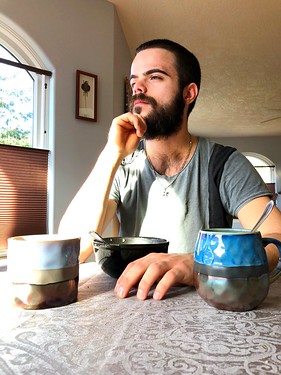Exactly where all essential application, libraries and distributions are out there. A Virtual
Where all vital application, libraries and distributions are accessible. A Virtual Machine with all essential application and libraries preinstalled is also offered to facilitate the computer software download and installation process.Sensors 20, 6. ExperimentsA wide assortment of experiments have been performed within the testbed, mostly inside the testbed space, benefiting from its controlled atmosphere. Nonetheless, also indoors experiment outside of your controlled testbed room [48] and outdoors experiments [49] have been carried out. Even though a few of these experiments focused on multirobot schemes and some others on static WSN algorithms, the higher number of experiments performed concentrated on WSNrobot cooperation. In several circumstances this cooperation is exploited to enhance perception. In others, robotWSN collaboration is established to address other objectives, including growing communication robustness. This section briefly presents a number of  the experiments carried out trying to show an overview of your testbed capabilities. 6.. RobotWSN CollaborationThe testbed is appropriate for experiments with tight WSNrobot cooperation. We describe two of them. In the initial a single the robot aids to enhance the performance of the static WSN. In the second, the static WSN nodes guide mobile robots to reach their destination. Network communication is normally affected by connectivity boundaries and holes, or malfunctioning, mislocated or missing nodes. The objective is PubMed ID:https://www.ncbi.nlm.nih.gov/pubmed/25620969 to diagnose a static WSN network deployed in an area and, if required, to repair it applying robots equipped with WSN nodes. The robots deployed at specific repairing locations are used as WSN communication relays. WSN repairing could also be applied in sensing, e.g to substitute failing nodes or to intensify the monitoring of an area. Through the diagnosis step, robots surveyed the region discovering the topology of the network. The robots broadcasted beacon messages and each and every static nodes responded with messages containing the ID of its onehop neighbor nodes. Each and every robot generated its connectivity matrix and transmitted it to the base station. Network repairing is performed in two steps. The very first one increases kconnectivity. kconnectivity expresses the number “k” of disjoint paths in between any pair of nodes inside the network. 0connectivity means that there is no less than one particular pair of Glycyl-L-prolyl-L-arginyl-L-proline acetate disconnected nodes. An algorithm was developed to determine the minimum quantity of network repairing places such that the network achieves nconnectivity. Inside the experiments n was taken as . Then, the robots had been commanded to position at these locations and their WSN node becomes element from the network. The connections between the WSN nodes, and thus the improvement within the WSN connectivity, may be monitored and logged working with the testbed GUI. Then, a second algorithm is employed to enhance kredundancy. kredundancy of a node could be the minimum quantity of node removals expected to disconnect any two neighbors of that node [50]. It offers a measure to represent the robustness from the network to node failures. The algorithm identifies the minimum quantity of repairing areas such that all deployed nodes reach a minimum of mredundancy. Inside the experiments m was taken as two. Then, the robots are commanded to position at these places. The experiment was operated with all the GUI and quite a few basic functionalities have been utilised such as the robot trajectory following. Throughout the diagnosis stage, numerous mobile robots patrolled cooperatively the region at the same time.
the experiments carried out trying to show an overview of your testbed capabilities. 6.. RobotWSN CollaborationThe testbed is appropriate for experiments with tight WSNrobot cooperation. We describe two of them. In the initial a single the robot aids to enhance the performance of the static WSN. In the second, the static WSN nodes guide mobile robots to reach their destination. Network communication is normally affected by connectivity boundaries and holes, or malfunctioning, mislocated or missing nodes. The objective is PubMed ID:https://www.ncbi.nlm.nih.gov/pubmed/25620969 to diagnose a static WSN network deployed in an area and, if required, to repair it applying robots equipped with WSN nodes. The robots deployed at specific repairing locations are used as WSN communication relays. WSN repairing could also be applied in sensing, e.g to substitute failing nodes or to intensify the monitoring of an area. Through the diagnosis step, robots surveyed the region discovering the topology of the network. The robots broadcasted beacon messages and each and every static nodes responded with messages containing the ID of its onehop neighbor nodes. Each and every robot generated its connectivity matrix and transmitted it to the base station. Network repairing is performed in two steps. The very first one increases kconnectivity. kconnectivity expresses the number “k” of disjoint paths in between any pair of nodes inside the network. 0connectivity means that there is no less than one particular pair of Glycyl-L-prolyl-L-arginyl-L-proline acetate disconnected nodes. An algorithm was developed to determine the minimum quantity of network repairing places such that the network achieves nconnectivity. Inside the experiments n was taken as . Then, the robots had been commanded to position at these locations and their WSN node becomes element from the network. The connections between the WSN nodes, and thus the improvement within the WSN connectivity, may be monitored and logged working with the testbed GUI. Then, a second algorithm is employed to enhance kredundancy. kredundancy of a node could be the minimum quantity of node removals expected to disconnect any two neighbors of that node [50]. It offers a measure to represent the robustness from the network to node failures. The algorithm identifies the minimum quantity of repairing areas such that all deployed nodes reach a minimum of mredundancy. Inside the experiments m was taken as two. Then, the robots are commanded to position at these places. The experiment was operated with all the GUI and quite a few basic functionalities have been utilised such as the robot trajectory following. Throughout the diagnosis stage, numerous mobile robots patrolled cooperatively the region at the same time.
